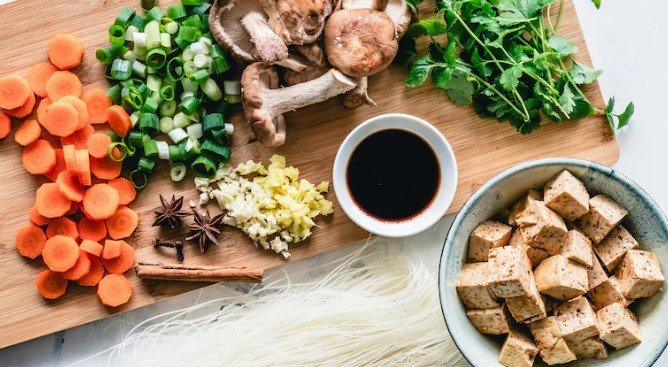“Cease the fixation on protein and turn your gaze toward fibre. Studies reveal that the vast majority—even vegans—already ingest sufficient protein. Yet close to 90% of individuals fall dramatically short of the daily recommendation of 30 grams or more of fibre,” remarks Dr. Bhasha Mukherjee, General Practitioner and social media voice.
Her observation is hardly misplaced. The craze for protein milestones has swept across wellness spaces like wildfire. Some label it the protein revolution, spreading not only through India but seeping into global diets. Corporations have eagerly latched on, lining store aisles with a torrent of protein-infused commodities.
Statistics echo the fervor: India’s protein market is anticipated to stand at 1.52 billion USD by 2025, soaring toward 2.08 billion USD by 2030.
Yet, amid the muscle-mania, fibre emerges as the quiet disruptor—its relevance no longer a fleeting whisper but a sustained crescendo, amplified by digital chatter. Experts urge parity: fibre quotas deserve as much consciousness as protein tallies.
Fibre Before Protein
“For decades, the dialogue in fitness and health was monopolized by protein—for chiselled physiques and weight control. But people are awakening to the truth that digestion, gut vitality, and metabolic harmony carry equal weight, with fibre underpinning them all,” affirms Tanya Khanna, Nutritionist and Yoga Mentor at Alyve Health.
Swatee Sandhan, Chief Dietician at Jupiter Hospital, Pune, corroborates. She too perceives fibre’s ascent, particularly within urban landscapes where awareness of gut resilience and chronic-disease deterrence has blossomed.
She adds that wellness campaigns spotlighting fibre-rich staples—millets, seasonal greens, pulses—are captivating younger, health-curious cohorts.
“Protein dominates courtesy of gym culture and supplement marketing. Conversely, fibre’s surge rides on affordability and its ready presence in Indian essentials like dal and ragi,” Sandhan observes.
The Engine Behind the Fibre Craze
This momentum arises from both empirical evidence and social platforms’ echo chambers.
Scientific literature and cinematic health exposés now tie gut ecology to immunity, mood balance, body weight, and even skin vitality—thrusting fibre onto the main stage.
“High-fibre is morphing into a market claim the way ‘high-protein’ once did. Fads like ‘fibremaxxing’ across TikTok showcase fibre as a non-negotiable pillar for gut well-being,” Khanna notes.
Sandhan, however, clarifies that fibre’s elevation is not an act of dethroning protein:
“India is burdened with obesity and digestive ailments. The matter is not substitution but sustainable nourishment. Reliance must rest on natural fibre reservoirs, with minimal processed fare, ample hydration, and restrained dependence on capsules or sachets.”
Such enthusiasm has already carved its niche in commerce—sachets, powders, fortified foods all parading the “fibre” badge. India’s fibre market is forecasted to touch USD 889.9 million by 2030, registering a CAGR of 11.8% from 2024 onward.
Defining Fibre
Dietary fibre constitutes plant remnants resistant to full digestion—seemingly wasteful, yet profoundly beneficial.
Unlike proteins, fats, or carbohydrates, which fragment to liberate energy, fibre traverses the intestines nearly unscathed.
Two archetypes dominate: soluble and insoluble.
- Soluble fibre, gracing oats, beans, apples, lentils, melts into a gel-like matrix in water, taming cholesterol and moderating blood glucose.
- Insoluble fibre, abundant in whole grains, nuts, and hardy vegetables, adds heft to stool, regulating bowel rhythm.
Both species are indispensable, often coexisting within plant provisions.
Why Fibre Matters
Its virtues stretch far beyond smooth digestion.
“Fibre nourishes beneficial gut flora, tempers glucose spikes, curbs cholesterol, and triggers satiety—thus damping overeating,” Khanna explains.
The Indian Council of Medical Research prescribes 25–30 grams daily (approx. 14 grams per 1,000 kcal). Yet, surveys reveal that most Indians ingest less than half, a direct consequence of polished grains and processed fare.
Sandhan illustrates: “A daily plate with dal (1–2 g), two rotis (4–5 g), and vegetables (5 g) scarcely crosses half the quota. Without deliberate inclusion of legumes, coarse grains, and fruit, insufficiency is inevitable.”
Benefits extend into weight regulation, protection against Type 2 diabetes, cardiovascular disease, colorectal malignancy, and enhanced microbial diversity—cornerstones of resilience and immunity.
The Peril of Overindulgence
Excess fibre carries its own discomforts.
“Overconsumption can provoke bloating, flatulence, or abdominal unease. Without adequate fluids, constipation may ensue. In extreme intake, mineral absorption falters. The key is gradual elevation, alongside 2–3 litres of water daily,” Khanna cautions.
Hitting Fibre Milestones in Indian Homes
Fibre goals need not hinge on imported blends or artificial boosters.
Traditional kitchens already shelter solutions: dals, chapatis, greens, fruits, and revived millets like bajra, jowar, ragi—culturally rooted yet nutritionally rich. Government drives have rekindled their relevance.
Khanna captures the synergy with finesse: “Think of protein and fibre as comrades. Protein constructs the frame, fibre oils the machinery. Both indispensable, but fibre remains the overlooked ally.”
The Final Word
The fibre narrative has shifted from backstage murmur to centre-stage movement. With rising gut-awareness, digital amplification, and culturally affordable staples, fibre is poised not as a fleeting trend but as a lasting pillar. While protein will forever hold its rank, fibre is finally earning its rightful recognition.
